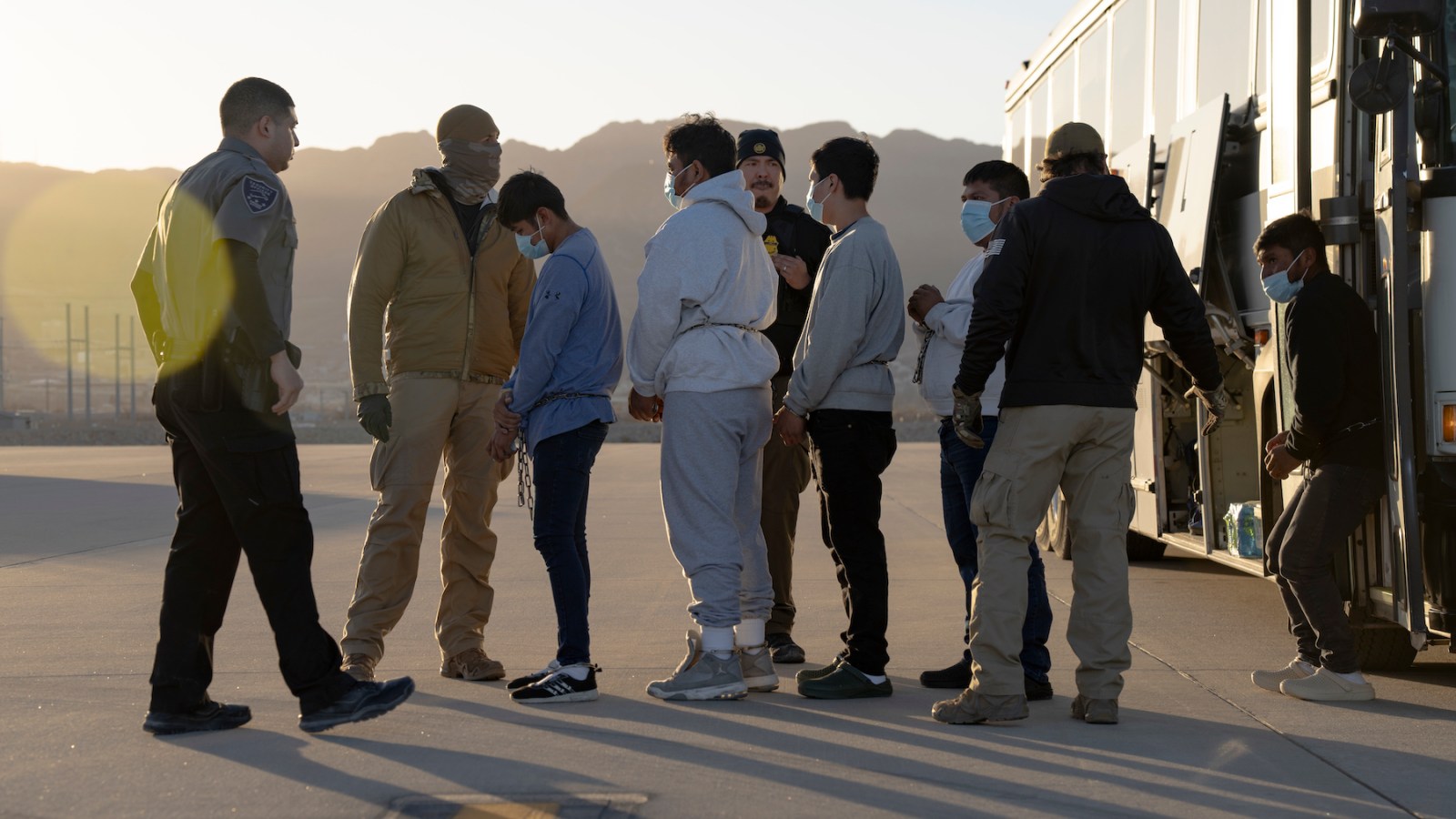
The Trump administration opened an immigrant detention site at a former Japanese internment camp in Texas, leading to condemnation from politicians, advocacy groups, and descendants of survivors of the WWII-era program.
Fort Bliss, a military base headquartered in El Paso, is slated to be the site of the largest federal detention center in the country. It currently holds around 1,000 detainees, but it is expected to eventually hold 5,000. Costing more than $1 billion in private contracts, it has also been used as a base for deportation flights.
The camp is reminiscent of “Alligator Alcatraz,” the Florida immigration detention facility that is slated to be shut down soon, per a judge’s order. Like Alligator Alcatraz, this makeshift tent facility forces detainees to endure soaring temperatures, risking heat-related illnesses.
Texas Rep. Jasmine Crockett said in a press release that there were “disturbing parallels” with Japanese internment at Fort Bliss. “Texas knows this history all too well, and we refuse to let it happen again,” she said.
The detention center at Fort Bliss known as Camp East Montana, which Republicans are calling “Lone Star Lockup,” is “a calculated move to militarize immigration enforcement, reduce transparency, and fast-track deportations with minimal accountability,” according to the American Civil Liberties Union.
Fort Bliss previously held up to 91 people of Japanese, German, and Italian descent in 1942 during World War II according to the Densho Encyclopedia, which chronicles the history of Japanese internment during the war. The facility had two compounds surrounded by barbed wire with guard towers.
“Generally those held at the U.S. Army facilities were first-generation Japanese Americans detained early in World War II and who were then processed and shipped to other internment camps,” Derrek Tomine, president of the National Japanese American Historical Society, told NBC News.
After the Pearl Harbor attack, the Franklin D. Roosevelt administration detained more than 120,000 people of Japanese descent in internment camps, many of whom were U.S. citizens. Roosevelt invoked the Alien Enemies Act, which Trump also invoked to send alleged Venezuelan gang members to a torture prison in El Salvador.
“The use of national security rhetoric to justify mass incarceration today echoes the same logic that led to their forced removal and incarceration,” Ann Burroughs, president and CEO of the Japanese American National Museum, told NBC News.
“It is inconceivable that the United States is once again building concentration camps, denying the lessons learned 80 years ago,” she added.
“It’s important to look to this past to maybe try to understand what’s going on in the present and what the end results could be,” Brian Niiya, a historian and content director at Densho, told USA Today. His grandfather, the editor of a Japanese language newspaper, was held in six internment camps during WWII.
Fort Bliss has an extensive history. About 4,500 Mexican refugees were incarcerated at the base during the Mexican Revolution in 1914 as well.
In 2021, the Biden administration used Fort Bliss to house unaccompanied children who arrived at the Southern border. In 2022, a government investigation found that children experienced distress and panic attacks as they waited weeks for updates from their case managers.
The Department of Homeland Security pushed back against Camp East Montana being compared to Japanese internment camps.
“Comparisons of illegal alien detention centers to internment camps used during World War II are deranged and lazy,” DHS Assistant Secretary for Public Affairs Tricia McLaughlin told Newsweek.
“We demand the immediate closure of Camp East Montana,” Samantha Singleton, policy director of the Border Network for Human Rights, told The Guardian.
The ACLU pointed to the fact that this detention facility gets the military more involved in the Trump administration’s immigration policy. The new camp, the group said, “marks dangerous expansion of militarized immigration enforcement.”
“It is a cruel, reckless, and costly operation launched with little input from local communities or elected leaders,” wrote Haddy Gassama, Senior Policy Counsel at the National Political Advocacy Department of the ACLU. “This is the Trump administration’s test case to see whether it can quietly convert military resources into tools for mass detention and deportation.”
“It was a miscarriage of justice then, and it is a miscarriage of justice now,” Burroughs, of the Japanese American National Museum, told NBC News.